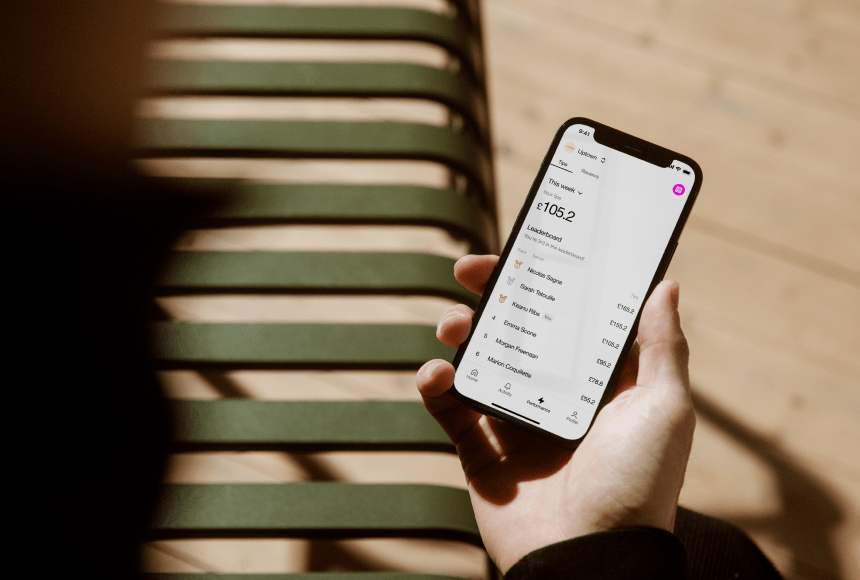
Embracing Tech to Keep Your Team Happy, Committed, and Thriving
Why Turnover Is Such a Big Issue in Hospitality
If you’ve been managing a restaurant for any length of time, you know staff turnover is one of the industry’s most persistent headaches. High turnover disrupts service, saps morale, and drains budgets in endless cycles of recruitment and training. Sometimes it seems inevitable: the hospitality world is fast, demanding, and often seen as a short-term gig.
But what if you could buck that trend by leveraging modern technology — specifically digital HR tools? From streamlining payroll to fostering better communication, strategic digitalisation not only cuts admin headaches but also boosts staff satisfaction. That’s a recipe for improved retention, team spirit, and ultimately a richer dining experience for your guests.
In this article, we’ll explore how going digital in areas like scheduling, payments, and staff engagement can lower employee churn in your restaurant. These steps aren’t just about being trendy; they’re about using fresh technology to solve age-old staffing pains.
1. Simplifying Schedules, Boosting Transparency
One silent driver of restaurant turnover is the dreaded rota. Juggling shifts, last-minute changes, and staff requests can feel like endless puzzle work. Employees hate confusion about which day they’re working, or abrupt schedule changes that wreck personal plans.
Where digital HR can help:
- Scheduling Apps: Tools that let managers draft rotas in minutes, then push them to employees’ phones. Staff can request swaps or holidays directly in the app, preventing the dreaded “lost sticky note” syndrome. This clarity translates into better staff morale.
- Real-Time Adjustments: If there’s a sudden cancellation or a big group booking, managers can tweak staff levels quickly and notify everyone through a push alert. The result? Fewer panicky phone calls and less scramble to fill shifts, which means staff feel more secure.
By adopting user-friendly scheduling platforms, you ensure your team always knows where they stand. That sense of stability helps reduce frustration, a key factor in high turnover. And with employees happier and well-informed, they’re less likely to jump ship for a competitor that promises “easier hours.”
2. Using Quick, Modern Payment Solutions to Keep Staff Motivated
An underappreciated aspect of staff happiness is how payments (including tips) are handled. In many restaurants, the old-fashioned card machine routine can be chaotic, leading to mix-ups over tips or leaving staff uncertain if they’re getting their fair share.
How Sunday can lighten the load:
- Faster Checkout, More Time for Service: Instead of rushing around with a card reader, your servers let diners scan a QR code at the table to pay and tip. That means staff have more bandwidth to focus on personal touches, often resulting in more gratuities overall.
- Automated Tip Tracking: Because Sunday logs every transaction (including tips), staff can quickly see what they’ve earned. Fewer disputes or confusion about how each table’s tip is allocated. This transparency boosts trust, which fosters loyalty.
Plus, a smooth, frictionless payment system leaves diners with a final positive impression, often translating to better reviews — and consequently better business. When employees sense that the technology helps them earn more and encourages repeat visits, they’re more likely to stick around rather than chase the next job.
3. Creating Seamless Onboarding and Training with E-Learning
For many restaurants, the turnover cycle begins right after hiring. A new server or cook might feel overwhelmed by chaotic induction routines: outdated manuals, random shadow shifts, or zero structure. Some might quit before they’ve even mastered the menu.
What digital onboarding can do:
- Self-Paced Modules: Instead of one giant info dump, break training into bite-sized e-learning sessions covering everything from basic menu knowledge to advanced upselling techniques. New hires can complete these modules on a tablet or phone, refreshing them whenever necessary.
- Interactive Quizzes and Tracking: Systems can test comprehension and log progress. Managers see who’s up to speed on allergy protocols or brand story. This fosters accountability and ensures no staff slip through the cracks poorly prepared.
A structured digital approach means staff feel guided rather than thrown in at the deep end. When employees are well-trained, they’re more confident — and that confidence typically reduces the urge to quit prematurely.
4. Real-Time Communication to Build a Solid Team Culture
Hospitality is all about rapid coordination. A busy service calls for precise timing between kitchen, bar, and floor. If staff rely on scribbled notes or ad-hoc WhatsApp groups, miscommunication and stress can surge. Over time, that tension causes people to leave.
Digital tools to unify your team:
- Centralised Messaging Platforms: A dedicated app or channel for scheduling updates, shift swaps, or announcements cuts confusion. Everyone sees the same info, so rumours about “who’s off next weekend” become less frequent.
- Micro-Feedback Loops: Some platforms let managers do quick polls or gather staff opinions on new recipes or decor changes. This fosters a sense of belonging. Team members want to stay where they feel heard.
When staff sense consistent, transparent communication from management, they’re less likely to burn out or feel blindsided by changes. Clear dialogue is the glue that holds your people together, especially under pressure.
5. Embracing Data to Reward Great Performances
One key to lowering turnover is recognising excellence. Many employees leave not because they dislike the job but because they feel undervalued. If your appreciation is vague or random, top performers may believe their efforts go unnoticed.
Digital solutions to the rescue:
- Trackable Metrics: A good point-of-sale or staff management system can reveal who consistently sells the most specials, who garners the highest tips, or who’s rarely late. This data-based recognition feels more valid to employees than guesswork or favouritism.
- Public Leaderboards: Some restaurants use gamification apps that display, for instance, how many desserts each server sold this week. Done tastefully, these mini-challenges can stoke friendly competition and keep staff engaged, if you pair them with small rewards (e.g., a free meal, a shift preference, or a bonus day off).
Accurate, real-time data also makes it simpler to spot staff who might be struggling. If one server’s tips are dropping or they’re racking up a high table-turn time, a manager can intervene supportively before frustrations peak.
6. Flexible Work Arrangements and Immediate Payroll
In 2025’s competitive restaurant job market, flexibility is gold. Staff who juggle second jobs or personal commitments appreciate the chance to set some of their hours or to pick up last-minute shifts for extra cash.
- Shift-Bidding Platforms: Some advanced systems let staff see available shifts and bid for them based on seniority or performance points. This approach can eliminate frantic phone calls trying to fill a shift. Staff get autonomy; managers fill spots with minimal hassle.
- Instant Pay or Early Wage Access: Another rising trend is letting employees receive part of their wages quickly, without waiting for the monthly or weekly pay run. Tools that track hours digitally can facilitate this. Employees facing urgent expenses can access what they’ve already earned, reducing stress and sometimes the impetus to look for a higher-paying role.
Such tech-based flexibility can be a big differentiator. Staff who appreciate the convenience are likelier to stay loyal, cutting down your recruitment cycle.
7. Facilitating Positive Feedback and Growth
Restaurant workers often operate in high-intensity conditions. They might not always get real-time praise for a job well done — an oversight that can erode motivation. Technology can change that, making it easier for both managers and peers to acknowledge success:
- Peer Recognition Apps: Quick “kudos” features let employees commend a colleague for stepping up in a rush, or for mastering a new dish plating. This fosters camaraderie and a sense of collective achievement.
- Regular Performance Check-Ins: Some digital HR tools schedule short monthly chats where staff can self-reflect on goals. It’s less formal than a dreaded annual review, but more consistent, thus spotting issues or celebrating wins in real time.
Humans thrive on feedback. Encouraging a feedback-friendly culture, supported by the right apps, ensures staff feel valued — an antidote to the “grind-and-quit” pattern that plagues many restaurants.
8. Transparent Tip Allocation and Payroll
Money matters. If your staff suspect tip distributions aren’t fair or that monthly pay calculations are off, tensions build quickly. In the fast-moving chaos of a restaurant, a small slip can lead to big mistrust.
- Automated Tip Splitting: Tools linked to digital payment solutions (like Sunday) can track exactly how much each server generated, then distribute tips accordingly. This transparency eases any resentment or confusion about shortfalls.
- Clear Payslips and Summaries: Digital payroll systems that itemise hours, overtime, and tips help staff see precisely where their wages come from. That clarity fosters trust, crucial for staff loyalty.
Turning pay from a potential grievance into a simple, accurate process is one of the best ways to keep staff grounded. If they see stable earnings and no fuss about distribution, they’re free to concentrate on delivering a stellar dining experience.
Building a Culture That Retains Talent
All the digital tools in the world won’t solve staff churn if the culture is toxic or chaotic. However, when you combine strong leadership with the streamlined perks of digital HR, a powerful synergy emerges:
- Less Paperwork, More Human Connection: Freed from laborious scheduling or tip-chasing, managers can invest in coaching, praising, or solving real team problems.
- Empowered, Well-Informed Staff: No more guesswork about shifts or wages. Everything’s in an app, on display, leaving staff feeling in control and respected.
- Continuous Improvement: Access to analytics, feedback loops, and e-learning fosters a dynamic environment where everyone can refine their skills and see progress.
Over time, these factors nurture a stable, content workforce that sees your restaurant as more than a transient job — they see it as a place to build a career or at least commit for a meaningful stretch.
Charting a Path to Lower Turnover
If your restaurant grapples with high staff churn, it’s easy to blame the industry’s nature. Yet, adopting a strategic digital approach can reshape that narrative. By focusing on scheduling clarity, easy tipping and payment solutions like Sunday, robust training, and data-driven recognition, you create conditions where staff stick around longer, deliver higher-quality service, and ultimately become your biggest advocates.
Yes, each new platform or system requires some upfront investment in time and possibly money. But the return on that investment quickly becomes visible: fewer last-minute shift crises, happier servers who see direct tip benefits, streamlined daily routines, and a management team that can lead rather than fire-fight.
In a sector where “staff shortage” headlines keep popping up, standing out as an employer that respects and empowers its team is vital. Digital HR might sound futuristic, but the real magic is in simple everyday improvements: quick communication, transparent pay, flexible shift management, and unwavering support for the humans behind your brand. Embrace these transformations now, and watch your staff retention — and overall restaurant success — thrive in 2025 and beyond.
Find out more today
Drop us your details below and we’ll reach out within the next 24
“Bill please” is a thing of the past.
With our integrated QR codes your customers pay in seconds, straight from their table.


